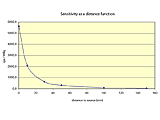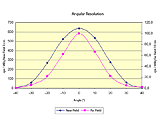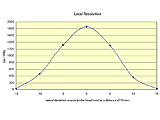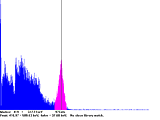PET-Probe
1. Description
The passive PET probe is derived from the standard probe "HiSens". The PET-probe is for the detection of higher-energy radiation like for example 131J (EGamma = 365 keV) and for the direct detection of radiation resulting from the positron annihilation of 511 keV.
In order to achieve nearly as good collimation as for the standard probes for 140 keV, the collimator sleeves / tips are dimensioned accordingly. The PET probe is available in two versions: with a probe diameter of 22 mm (side shielding 75% @ 511keV) and 31 mm (side shielding 93% @ 511 keV). Both models have a sensitivity > 5000 counts / s / MBq at a standard dihedral angle of 45°. The collimators are built in stainless steel tubes that can be screwed off and autoclaved separately.
When used intraoperatively the probe has to be protected by a sterile latex coating, as for example used in ultrasound diagnostics.
2. Technical Data
| Detector | CsI:Tl-scintillation Ø 6 mm x 8 mm long, read-out by a 20 mm2 pin-photodiode |
| Gamma-energy range | 60 keV … > 511 keV |
| Dimensions | length: 220 mm; lenght of cable: 3 m diameter hand piece: 20 mm
|
| Detection efficiency | 35% @ 511 keV |
| Special features | 2 different collimator sleeves available |
2.1 Collimation Side-shielding
| Material |
Tungsten
|
| dihedral angle / FOV | Standard 40° FWHM |
2.2 Background sensitivity
Zero effect < 0,1 cps = 6 c/min





